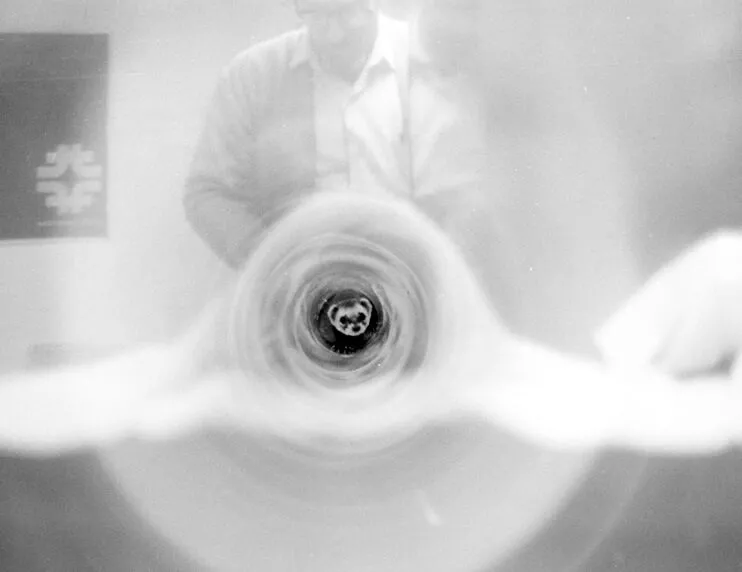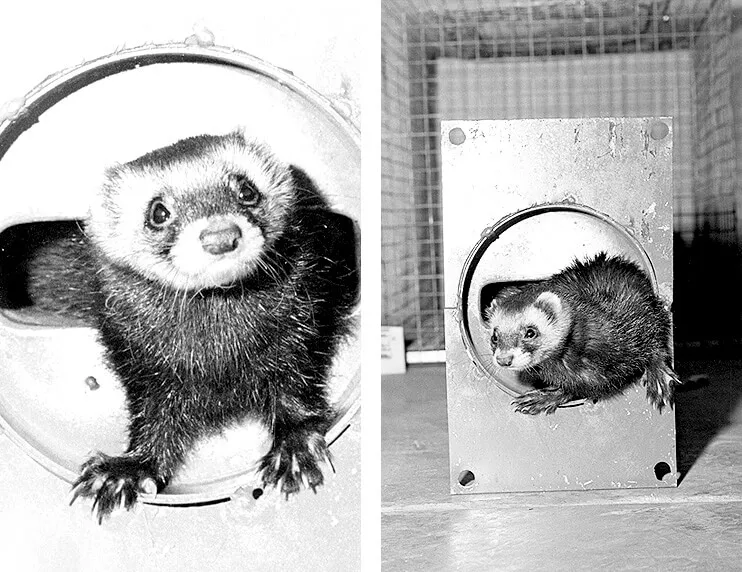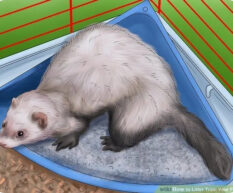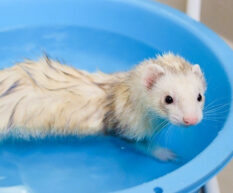Ferret News
Felicia: The Littlest Particle Physicist
By Courtney Stoker

Felicia in the Fermilab particle accelerator. Photo by Tim Fielding, published with permission from the Fermilab History and Archives Project
Ferrets have been hard workers for humans since their domestication. Their small size and cleverness make them excellent for hunting animals like rabbits, but they’ve been put to more creative uses since we started harnessing electricity.
Fermilab (short for Fermi National Accelerator Laboratory) has been the premier physics lab in the United States since it was found in 1967. In the early 70s, Fermilab’s Meson Laboratory (a meson is a subatomic particle) was building the world’s most powerful particle accelerator. In 1971, a series of disasters interrupted operation of the main ring, the large loop of a kind of vacuum tube that the particles need to travel along. Magnets are installed along this loop in order to hold the particles in place as they are accelerated down the loop. The magnets used in the accelerator had been installed in humid conditions, so each wet magnet needed about a quart of water removed; unfortunately, when the physicists tried to bring the magnets online, many of them shorted. The problem was severe enough that it couldn’t be attributed entirely to the humidity, and the scientists were flummoxed. The accelerator also suffered from power supply failures, and construction debris littered the vacuum tube. This debris was a severe problem because the particles must travel through the vacuum tube unobstructed, otherwise the magnets can not keep the particles in place and the experiments will fail. Scientists came up with a unique solution for this issue: A 15-inch female ferret named Felicia.

The Meson Lab purchased Felicia for $35–a low-cost, low-tech stopgap solution to the accelerator’s cluttered tube. With a string tied around her specially-made harness, she was eventually trained to run through the 300-foot sections of the vacuum tube. Once Felicia had pulled the string all the way through the tube, scientists tied a swab with a cleaning solution to it and pulled it along. By most accounts, Felicia did a marvelous job. She was happy to traverse the long tubes in return for a comfy cage and a raw diet. (She particularly loved hamburger.) However, she was always intended to be a short-term solution while the engineering team built a robotic replacement. This was apparently for the best, because Felicia had tired of the job of running through the long tubes. While engineers were not specific about how they knew Felicia was bored with her job, those of us who know ferrets can guess; she probably took a few naps in the tubes or turned around when pushed in one. After several months and many hundreds of feet of tube, she took an early retirement and lived as a beloved housepet.
The main ring still suffered failures and problems, but not because of Felicia. Her work contributed to a decrease in those failures. She cleaned many tube sections and saved Fermilab thousands of dollars and untold hours of downtime in the process. She is still a minor celebrity in the physics community, and her reputation is well-deserved.
When I told a friend of mine about Felicia, she immediately turned to her cat and asked, “And what have you done for science, Lucy?” Lucy did not offer a comment, because cats don’t care about science.
This article originally appeared in Dook Dook Ferret Magazine (Issue 5). To receive 6 new Dook Dook Ferret Magazines per year + get access to other bonuses then join the Ferret-World Membership.




